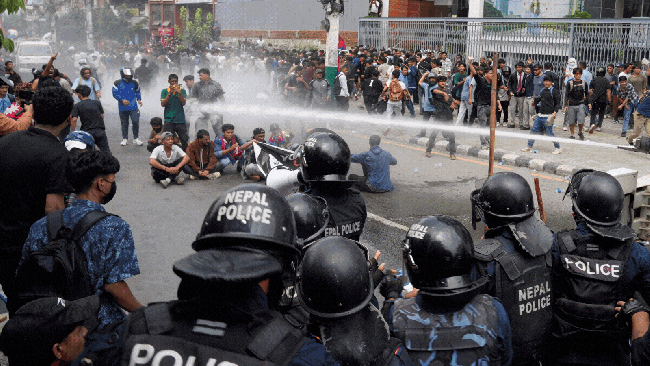Opinion PM Oli’s resignation is a measure of the rage among Nepal’s youth
The government has responded to the Gen Z protests with lethal, disproportionate force, firing tear gas, rubber bullets and subsequently live ammunition

Written by Shivam Shekhawat
Prime Minister K P Sharma Oli resigned on September 9 in the face of widespread protests across Nepal. While the main trigger for the protests was the latest (and now revoked) government directive imposing a ban on 26 social media sites, the grievances highlighted by the Gen Z protesters, including corruption and nepotism, are long-standing structural issues affecting the country. The protesters gathered first at Maitighar Mandal and rallied towards the federal parliament in Kathmandu. Simultaneous protests were also held in Pokhara, Butwal, Bhairahawa, Itahari and Damak.
Even as the administration imposed a curfew, the predominantly peaceful protests soon turned chaotic, as some protesters broke through the barricades outside the federal parliament in New Baneshwar. The government responded with lethal, disproportionate force, firing tear gas, rubber bullets and subsequently live ammunition at the young protesters. Oli blamed “infiltrators” for the outbreak of violence and ordered the formation of an inquiry committee to investigate the violence. At the time of writing, 19 people have lost their lives and more than 400 have been injured.
Likening the current protests to the 2006 revolution against the country’s former monarchist rulers, people across Nepalese society have been asking for the resignation of the Prime Minister, along with the chief of the police forces and the defence officer. Home Minister Ramesh Lekhak tendered his resignation on Monday on “moral grounds” while the Minister for Agriculture and Livestock Development also stepped down today as a mark of protest against the government’s “authoritarian” actions. The congress general secretary questioned the utility of keeping the coalition in place and urged Oli to step down. That has now happened. Leaders in the Opposition, like former PM Prachanda also called on the government to revoke the ban and address the people’s concerns while the Rashtriya Swatantra Party asked for a fresh mandate and a judicial probe to investigate the violence.
Nepal has been racked with a general sense of disillusionment for a while. In March this year, two people died when pro-monarchy protests broke out across the country. Even as the protests raised concerns about the growing support for a return to the monarchy, the protesters’ grievances were also directed against the dismal state of the political system and rising unemployment.
The blanket ban on 26 social media sites imposed on September 4 following a Supreme Court verdict owing to the platforms’ failure to comply with the country’s laws was seen as the government’s attempt to stifle any criticism directed against it, even as there was an acknowledgement that some form of regulation is important. While many opposition leaders called on the government to revoke the ban, it was also under their leadership that preceding directives aimed at targeting social media activity were framed. The social media directives first came in 2023 mandating compliance with the country’s laws while the then government banned TikTok because it “disrupted social harmony”. Even as protests broke out, Oli refused to revoke the ban, stating his refusal to kowtow in front of Gen Z “troublemakers”. As the death toll increased amid widespread condemnation, the government decided to revoke the ban in a late-night cabinet meeting.
In the last 17 years, since its transition into the Federal Democratic Republic, Nepal has had more than 12 different prime ministers, with the seat rotating between the leaders of the three mainstream parties. The cost of this constant politicking is borne by the people. The country has a burgeoning young population with approximately 40 per cent of the people falling under the 14-60 age bracket. In the last decade, the out-migration from the country to the Gulf, Europe, Australia and the United States corresponds with the youth’s increasing dissatisfaction with the lack of development. The economy is reliant on remittances, which make up approximately 22 per cent of the country’s GDP. Youth unemployment in the younger age bracket is also high with more people involved in daily wage work. The leadership’s inability to create opportunities at home is seen as a system failure. A major theme of the current protests was also the apparent lifestyle gap between the families of political elites and the general population, with social media abuzz with the hashtag “NepoBaby”.
Concerns about a faltering economy, the migration of people to other countries, the over-dependence on remittances and the government’s inability to bring in effective policy changes because of frequent power shuffles are deeply structural. For the next dispensation in Nepal, it is imperative to take a hard look at how they wish to cater to the aspirations of the youth.
The writer is a junior fellow with ORF’s Strategic Studies Programme





